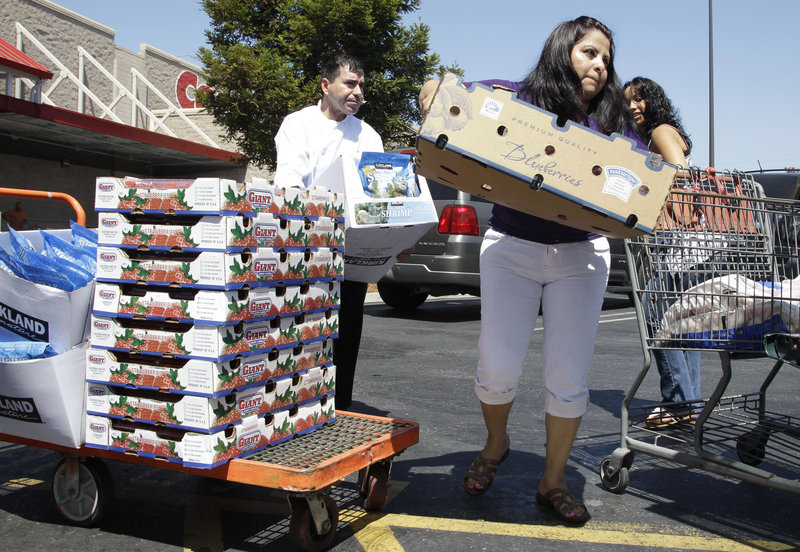WASHINGTON — Consumer spending grew in July by 0.8 percent, the largest amount in five months. That followed a decline in June and helped ease fears that the U.S. economy is on the verge of another recession.
Americans bought more cars and spent more last month to cool their homes during a heat wave.
Personal incomes increased 0.3 percent last month, the Commerce Department said. That’s slightly higher than the modest 0.2 percent in June, the weakest growth in seven months.
The first look at spending in the second half of the year helped give Wall Street a lift. The rise in spending added to positive reports that Hurricane Irene didn’t do as much damage as feared.
Economists said the spending report was a strong sign that the economy rebounded in July after growing at an annual rate of just 0.7 percent in the first half of the year – the slowest pace since the recession officially ended two years ago.
Consumer spending is important because it accounts for 70 percent of economic activity.
July’s spending and income figures “significantly alter the outlook for third-quarter GDP growth,” said Paul Dales, a senior U.S. economist for Capital Economics. Dales said growth for the July-September quarter is on track for an annual rate of 2.5 percent, up from his previous estimate of 1.5 percent.
Dales noted that the report measured spending ahead of a sell-off on Wall Street in late July and early August, which may force consumers and businesses to pull back on spending and investment. The stock market has lost 11 percent of its value since July 21.
But even if the early August data are weak, talk of another recession “would seem strange” when the economy appears to be growing more strongly, Dales said.
The economy added 117,000 net jobs in July, twice the number added in each of the previous two months. Spending on retail goods rose faster last month than in any month since March. U.S. automakers rebounded last month to boost factory production by the most since the Japanese earthquake crisis.
In July, consumer spending rose at a faster pace than income, which means Americans saved less. The savings rate fell to a four-month low of 5 percent, down from 5.5 percent in June.
The increase in spending was led by a 1.9 percent jump in purchases of durable goods, products such as autos and appliances that are expected to last at least three years. Spending on non-durable goods rose 0.7 percent.
The purchase of services, the biggest spending category, rose 0.7 percent. Much of the increase was because of a jump in electricity use. Many Americans kept their air conditioners running in July to combat a heat wave in most parts of the country.
In a speech Friday, Federal Reserve Chairman Ben Bernanke proposed no new steps to boost the economy. But he did say the Fed would expand its September meeting to two days to allow a fuller discussion.
Send questions/comments to the editors.



Success. Please wait for the page to reload. If the page does not reload within 5 seconds, please refresh the page.
Enter your email and password to access comments.
Hi, to comment on stories you must . This profile is in addition to your subscription and website login.
Already have a commenting profile? .
Invalid username/password.
Please check your email to confirm and complete your registration.
Only subscribers are eligible to post comments. Please subscribe or login first for digital access. Here’s why.
Use the form below to reset your password. When you've submitted your account email, we will send an email with a reset code.